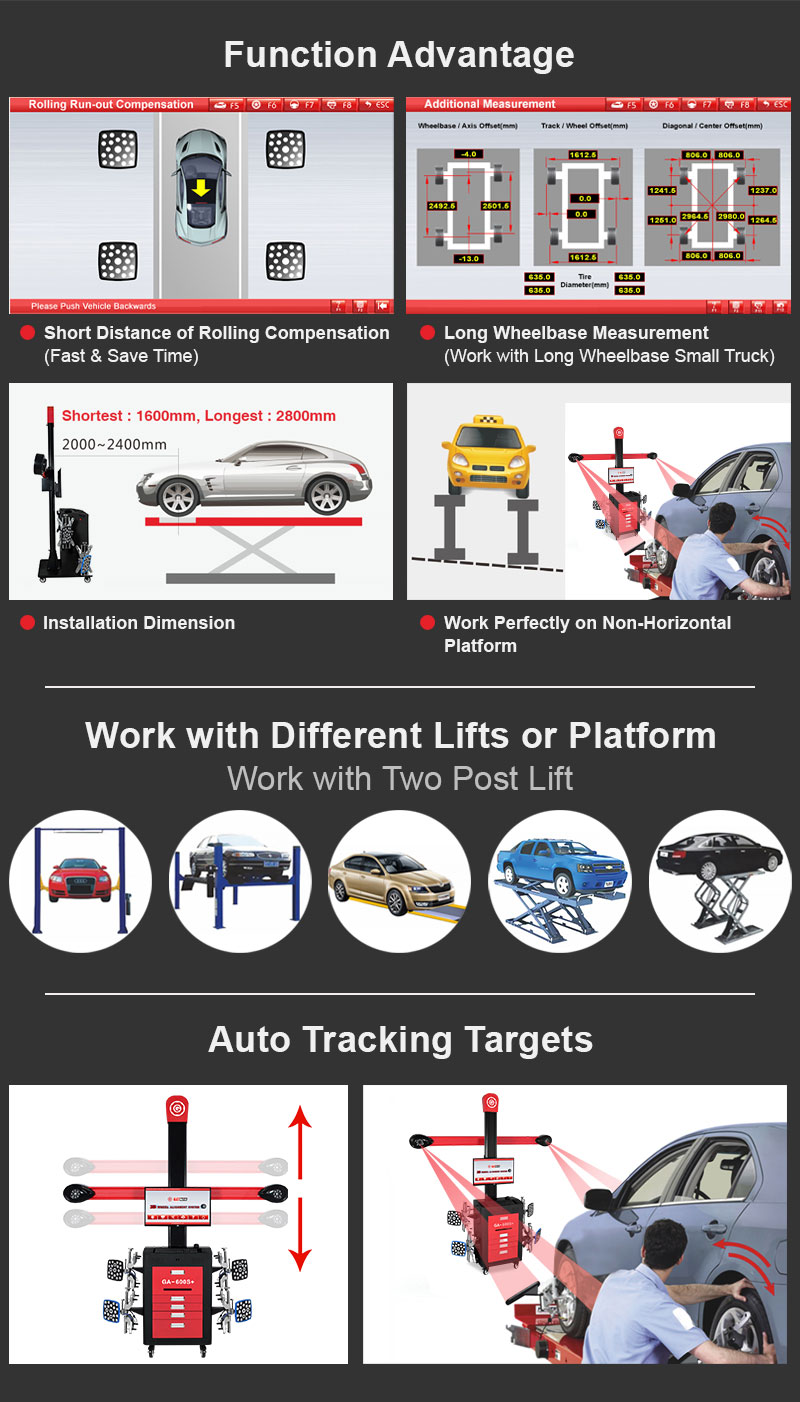What are the limitations of traditional wheel alignment methods?
Are you tired of your car pulling to one side, chewing through tires faster than bubblegum in a kid’s mouth? If so, you’re likely no stranger to the world of wheel alignment. But have you ever stopped to wonder, amidst the jargon and tire tread, about the limitations of traditional wheel alignment methods? Fear not, dear reader, for we are about to embark on a journey of discovery, peeling back the layers to reveal the flaws that lurk beneath the surface!

I. The Basics of Wheel Alignment
Before delving into the murky waters of limitations, let’s first ensure we’re all on the same page regarding what wheel alignment actually entails. Simply put, it’s the process of adjusting the angles of your vehicle’s wheels to ensure they’re perpendicular to the ground and parallel to each other. Sounds simple enough, right? Well, buckle up, because it’s about to get bumpy!
II. Unveiling the Limitations
1. Manual Measurement Mishaps
Ever witnessed a mechanic armed with nothing but a tape measure and a prayer trying to align your wheels? While it may seem like a scene straight out of a slapstick comedy, it’s actually a common sight in many auto shops. The reliance on manual measurements leaves ample room for error, as even the steadiest hand can falter when tasked with such precision.
What are the limitations of traditional wheel alignment methods? Well, one major issue lies in the inherent subjectivity of manual measurements. Human error, differing interpretations of alignment specs, and inconsistencies between technicians can all contribute to inaccuracies that compromise your vehicle’s performance and safety.
2. Outdated Equipment Woes
Imagine trying to navigate a bustling city street armed with nothing but a map from the 1980s. Sounds like a recipe for disaster, doesn’t it? Well, the same principle applies to traditional wheel alignment methods that rely on outdated equipment. While they may have sufficed in days of yore, they pale in comparison to the precision and efficiency offered by modern technology.
What are the limitations of traditional wheel alignment methods? Outdated equipment often lacks the sophistication needed to accurately assess and adjust today’s complex vehicle systems. As automotive technology advances at breakneck speed, relying on antiquated tools is akin to bringing a horse and buggy to a Formula One race!
3. Static Snapshot Syndrome
Picture this: your car is parked perfectly still, wheels locked in place as a technician takes a series of measurements. Seems like a foolproof method, right? Wrong! Traditional wheel alignment methods often suffer from what we like to call “static snapshot syndrome.” By only assessing your vehicle’s alignment while stationary, these methods fail to account for real-world driving conditions.
What are the limitations of traditional wheel alignment methods? Well, for starters, they overlook crucial factors such as suspension dynamics, tire wear patterns, and road surface variations. In essence, it’s like trying to diagnose a patient’s condition based solely on their appearance while sitting in the waiting room. It’s a recipe for misdiagnosis and missed opportunities for optimal performance.
III. The Road to Redemption: Modern Solutions
1. Laser Precision
Say goodbye to the days of squinting through a foggy shop window to align your wheels! With modern laser alignment technology, technicians can achieve unparalleled precision with the push of a button. By projecting laser beams onto a series of reflective targets attached to your wheels, this method offers accuracy levels that would make a mathematician blush.
What are the limitations of traditional wheel alignment methods? Laser alignment eliminates the guesswork associated with manual measurements, providing real-time data that leaves little room for error. Plus, it’s faster than you can say “alignment complete,” allowing you to get back on the road with confidence in no time!
2. 3D Imaging Innovation
Why settle for two-dimensional solutions in a three-dimensional world? Enter 3D imaging technology, the game-changer that’s revolutionizing the wheel alignment industry. By employing advanced cameras and sensors to create a digital model of your vehicle’s alignment, this method offers a level of accuracy and detail that would make even the most seasoned technician do a double-take.
What are the limitations of traditional wheel alignment methods? With 3D imaging, there’s no hiding from misalignments or discrepancies. Every angle, every adjustment is captured with crystal clarity, ensuring your vehicle performs at its peak no matter where the road takes you.
3. Dynamic Alignment Dynamics
Why settle for static snapshots when you can have a dynamic alignment experience? With modern dynamic alignment systems, your vehicle’s alignment is assessed and adjusted in real-time as you drive. By incorporating sensors that monitor suspension movement, steering input, and tire behavior, this method ensures your wheels stay perfectly aligned, even in the face of changing road conditions.
What are the limitations of traditional wheel alignment methods? Dynamic alignment takes the guesswork out of the equation, offering a level of accuracy and responsiveness that traditional methods simply can’t match. It’s like having a personal alignment assistant riding shotgun, ensuring your vehicle stays on the straight and narrow no matter what twists and turns lie ahead.
Conclusion
So, what are the limitations of traditional wheel alignment methods? From manual measurement mishaps to outdated equipment woes, it’s clear that relying on antiquated techniques can leave your vehicle’s performance and safety hanging in the balance. But fear not, for the road to redemption lies in the form of modern solutions such as laser precision, 3D imaging innovation, and dynamic alignment dynamics. By embracing these cutting-edge technologies, you can ensure your wheels stay on the straight and narrow, no matter what twists and turns lie ahead. So, buckle up and steer toward a brighter future for your vehicle’s alignment needs!
Get Access Now: https://www.gat-matic.com
FAQs
1. Are traditional wheel alignment methods still relevant in modern automotive repair?
- While traditional methods have their place, modern vehicles equipped with advanced technologies benefit from precision alignment techniques offered by laser-guided and computerized systems.
2. How often should I have my vehicle’s wheels aligned?
- It’s recommended to have your wheels aligned at least once a year or if you notice any signs of misalignment, such as uneven tire wear or steering drift.
3. Can misaligned wheels cause damage to my vehicle?
- Yes, misaligned wheels can lead to premature tire wear, compromised handling, and even mechanical issues such as suspension damage if left unaddressed.
4. What are the signs of misaligned wheels?
- Common signs include uneven tire wear, steering pulling to one side, vibration in the steering wheel, and a crooked steering wheel when driving straight.
5. How do advanced alignment technologies differ from traditional methods?
- Advanced alignment technologies utilize laser guidance and computerized systems to achieve precise measurements and adjustments, offering superior accuracy compared to traditional methods.
Describe Your Needs In Detail!
We will carefully evaluate your needs and give professional solutions.


